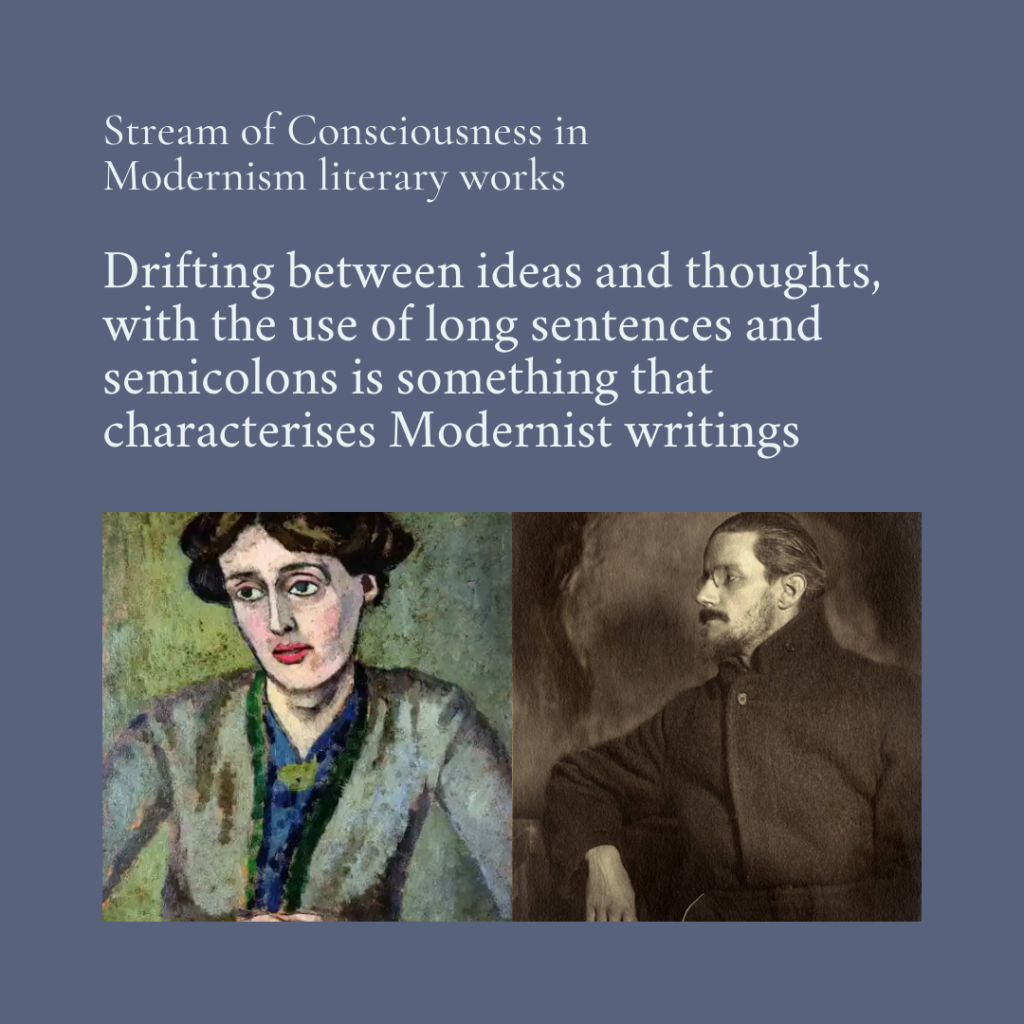
The novelty of the Stream of Consciousness technique is its user-friendly nature. Its universal occurrence lends to its familiarity. The unpolished and unstructured thoughts are far from other pieces of literature, notably the Interior Monologue technique. Although similar, the Interior Monologue technique employs the structure and combines the Stream of Consciousness’s apparent incoherence and disorderly structure – or lack thereof.
The Stream of Consciousness technique, although simple in theory, can be difficult to translate into an actual body of work. The narrator would have to be able to make images, flashes of sound – maybe even olfactory memories – and other non-language thoughts into processable literature for an audience that may be vastly unfamiliar with the narrator. In our minds, at all times, there rests a series of sensations that are never translated into palpable thought. Translating these thoughts into speech is hard enough, but into literature – it is an art rarely mastered. The mental activity of a human cannot be jotted down, cannot be encapsulated within words and cannot have a reason.
Despite the odds, the Stream of Consciousness technique has been mastered by a select few. Finding its beginnings in the modernist movement, pioneers like Virginia Woolf, Toni Morrison, William Faulkner and James Joyce spearheaded the style.
Within the technique, a niche segue into the Circadian Novel was found. A Circadian Novel spans over a singular day, or sometimes even less. Although it finds its roots in Biology, it is different in that the sense of time is warped within this style of a novel. Time, from a mathematical objective unit, becomes an abstract that does not control the flow of the story. The foreground is the individual’s own rhythm that becomes ‘time’.
In James Joyce’s Ulysses and Virginia Woolf’s Mrs Dalloway, both narrators find themselves in a 24-hour day but a flash in and out of this day using their stream of consciousness. The past, its relevance and the various events that have already occurred. They think in terms of memories, flashes, and senses. Objectivity finds no place in a Stream of Consciousness.
Bibliography
Higdon, David Leon. “A First Census of the Circadian or One-Day Novel.” The Journal of Narrative Technique, vol. 22, no. 1, 1992, pp. 57–64. JSTOR, http://www.jstor.org/stable/30225348. Accessed 4 Jun. 2022.
Voinovich, Vladimir, and John Jamieson. “Stream of Consciousness.” New Zealand Slavonic Journal, 2003, pp. 165–69. JSTOR, http://www.jstor.org/stable/40922151. Accessed 4 Jun. 2022.
Bowling, Lawrence Edward. “What Is the Stream of Consciousness Technique?” PMLA, vol. 65, no. 4, 1950, pp. 333–45. JSTOR, https://doi.org/10.2307/459641. Accessed 4 Jun. 2022.
